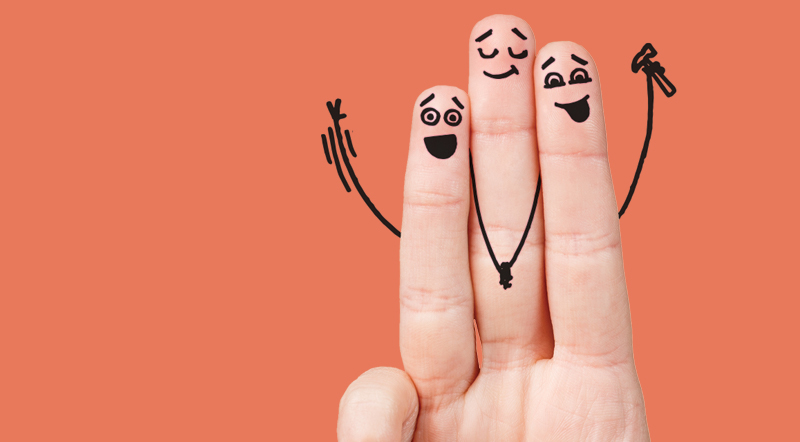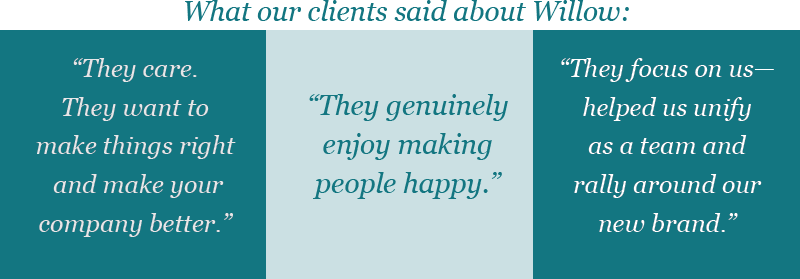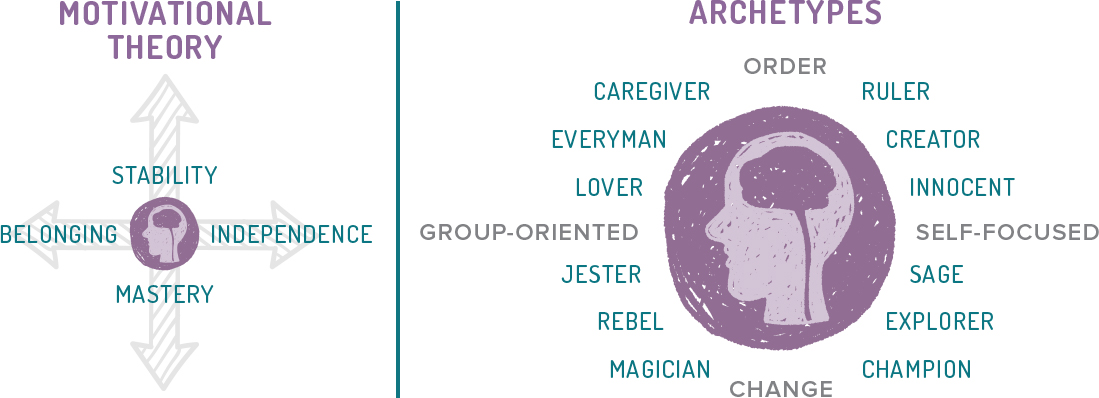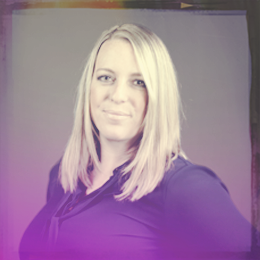
We think a brand is a promise. And the craft that brings that promise forth effectively and transformatively is multilayered. I get asked a lot about our branding process and talking about what we do for our partners is language I use every day. But this year, when we turned the tables on ourselves, I gained a whole new perspective.
To some degree, a rebrand can be extraordinarily difficult for agencies. Because the best of us are true chameleons—shedding our own skin to take the shape of whichever brand we’re serving at the moment. My closet is filled with quarter-zips, oxfords, and tees with other people’s logos on them. Because to do my job well, I become them.

When you’re inside the jar, you can’t read the label. So to read our own Willow label, we knew we needed our own objective voice. And to help lead us, I needed my own brand cleanse to make room for new growth. But before we get into my own aha moments (stay tuned for those later on the blog), I’ll tell you how we got reacquainted with ourselves.
1. Discovery
The objective here: get to the TRUTH (cue scary music). Our partners, Nila Neely and Bruce Dean, came alongside us to hold up a big mirror and help us see ourselves clearly. Tactically, this took the shape of:
- An organizational SWOT (strengths, weaknesses, opportunities, threats) influenced not only by key stakeholders but by interns too—every voice was important. This gave us a snapshot of our own perceptions.
- Research. So. Much. Research. We conducted employee loyalty and satisfaction surveys, external marketplace research, projective exercise polling, and in-depth interviews with a wide variety of clients and partners. This gave us a snapshot of how Willow was perceived by others.
- We also conducted our own communications audit—noting variance in message, imagery, style, tone, and brand use. We scrubbed our templates for inconsistencies and found a ton. “Getting Naked” is a Willow manifesto, and this process stripped us bare.
2. Identifying gaps and alignment
Alignment is usually easy to see—these are the things we’re known for. And we were relieved to hear much of the same language come from our clients in Nila’s interviews. Our clients had hired us largely because we provided relief and rescue and made them feel confident when they needed it most. Most described Willow as people-first and helpful—a little moment of “happy,” amidst their day-to-day challenges. We made things better for them. So we got to work figuring out a way to harness the power of “better.”

But it’s common that there’s a gap in perception between the way a brand sees itself and the way a consumer perceives it. There’s always a gap. And we were NO exception. As a full-service agency, we assumed that because we do “all the things,” people just naturally understood what those things are and how they work together for their business. As marketers, we weren’t communicating that. The truth was, many of our clients saw us for whatever service we were offering them at the time. Their perception of us was that of a hammer or a shovel, ours was of a Swiss army knife. This was a blind spot for us in how we communicated the brand.

3. Mapping the brand

The Innocent archetype that our brand activates in our audience (confirmed by what we learned about our audience’s motivations), began to emerge, promising that life does not need to be that hard. We began mapping the Willow brand using Thomas Gad’s 4-D Branding to write current versus ideal brand perceptions from the first-person standpoint of our clients. The Four Dimensions is also referred to as “Brand Mind Space.” And it’s the mental construct that people who experience the brand make when confronted by the totality of its elements. This mind space is where all channels of a brand’s identity find common ground. All products and services illicit a reaction within us based on the way it promises to fulfill four basic types of needs: functional, social, mental and spiritual—the Four Dimensions (or 4-D).
While the social dimension is the brand’s ability to foster a customer’s identification with a group, the spiritual dimension of the brand connects the customer to his/her perception of local and global responsibility. The mental dimension supports the individual mentally, and the functional details the perception of benefit related to a specific product or service. We wrote these in a current state (here’s what people think TODAY) and then in an ideal state (here’s how people are LIKELY to perceive us in the FUTURE if we do our job).
Constructing the Willow Brand Code, we trimmed our values down to THREE (so painful when you start with 37), which we nicknamed our “Pledge.” (Read more about the Pledge and the meaning behind our Values in our next blog.)

For 25 years, our willow tree has been a metaphor for flexibility, adaptability, and even a little shelter from the storm. This process helped us find even more meaning in the willow—with a whole lotta tree rings and a new perspective.
Join us here in the coming days as we share more about the visual identity that was born from our research and positioning.
